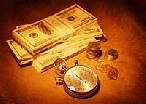
 |
|
| Financial Terms | |
| pecking order theory |
|
Information about financial, finance, business, accounting, payroll, inventory, investment, money, inventory control, stock trading, financial advisor, tax advisor, credit.
Main Page: inventory control, finance, payroll, business, financial advisor, investment, tax advisor, financial, |
Definition of pecking order theory
pecking order theoryFirms prefer to issue debt rather than equity if internal finance is insufficient.
Related Terms:Agency theoryThe analysis of principal-agent relationships, wherein one person, an agent, acts on behalf of Arbitrage Pricing Theory (APT)An alternative model to the capital asset pricing model developed by Bubble theorySecurity prices sometimes move wildly above their true values. Buy limit orderA conditional trading order that indicates a security may be purchased only at the designated Cross-border riskRefers to the volatility of returns on international investments caused by events associated Day orderAn order to buy or sell stock that automatically expires if it can't be executed on the day it is entered. Economic order quantity (EOQ)The order quantity that minimizes total inventory costs.  Fill or kill orderA trading order that is canceled unless executed within a designated time period. Limit orderAn order to buy a stock at or below a specified price or to sell a stock at or above a specified Limit order bookA record of unexecuted limit orders that is maintained by the specialist. These orders are Liquidity theory of the term structureA biased expectations theory that asserts that the implied forward Local expectations theoryA form of the pure expectations theory which suggests that the returns on bonds Market orderThis is an order to immediately buy or sell a security at the current trading price. Market segmentation theory or preferred habitat theoryA biased expectations theory that asserts that the Modern portfolio theoryPrinciples underlying the analysis and evaluation of rational portfolio choices Negotiable order of withdrawal (NOW)Demand deposits that pay interest. Normal backwardation theoryHolds that the futures price will be bid down to a level below the expected Open (good-til-cancelled) orderAn individual investor can place an order to buy or sell a security. That Pecking-order view (of capital structure)The argument that external financing transaction costs, especially Preferred habitat theoryA biased expectations theory that believes the term structure reflects the Pure expectations theoryA theory that asserts that the forward rates exclusively represent the expected Sell limit orderConditional trading order that indicates that a, security may be sold at the designated price or Static theory of capital structuretheory that the firm's capital structure is determined by a trade-off of the Stop-loss orderAn order to sell a stock when the price falls to a specified level. Stop order (or stop)An order to buy or sell at the market when a definite price is reached, either above (on a Stop-limit orderA stop order that designates a price limit. In contrast to the stop order, which becomes a economic order quantity (EOQ)an estimate of the number engineering change order (ECO)a business mandate that changes the way in which a product is manufactured or a job order cost sheeta source document that provides virtually job order costing systema system of product costing used open purchase orderinga process by which a single purchase ordering costthe variable cost associated with preparing, order pointthe level of inventory that triggers the placement special order decisiona situation in which management must determine a sales price to charge for manufacturing or service jobs outside the company’s normal production/service market theory of constraints (TOC)a method of analyzing the bottlenecks economic order quantityorder size that minimizes total inventory costs. expectations theory of exchange ratestheory that expected spot exchange rate equals the forward rate. random walk theorySecurity prices change randomly, with no predictable trends or patterns. trade-off theoryDebt levels are chosen to balance interest tax shields against the costs of financial distress. Quantity Theory of Moneytheory that velocity is constant, and so a change in money supply will change nominal income by the same percentage. Formalized by the equation Mv = PQ. Real Business Cycle TheoryBelief that business cycles arise from real shocks to the economy, such as technology advances and natural resource discoveries, and have little to do with monetary policy. Discrete order pickingA picking method requiring the sequential completion of Make-to-orderA production scheduling system under which products are only Order penetration pointThe point in the production process when a product is Order pickingThe process of moving items from stock for shipment to customers. money orderA guaranteed form of payment in amounts up to and including $5,000. You might request a money order in order to pay for tuition fees at a university or a college, or for a magazine subscription. Related to : financial, finance, business, accounting, payroll, inventory, investment, money, inventory control, stock trading, financial advisor, tax advisor, credit. |